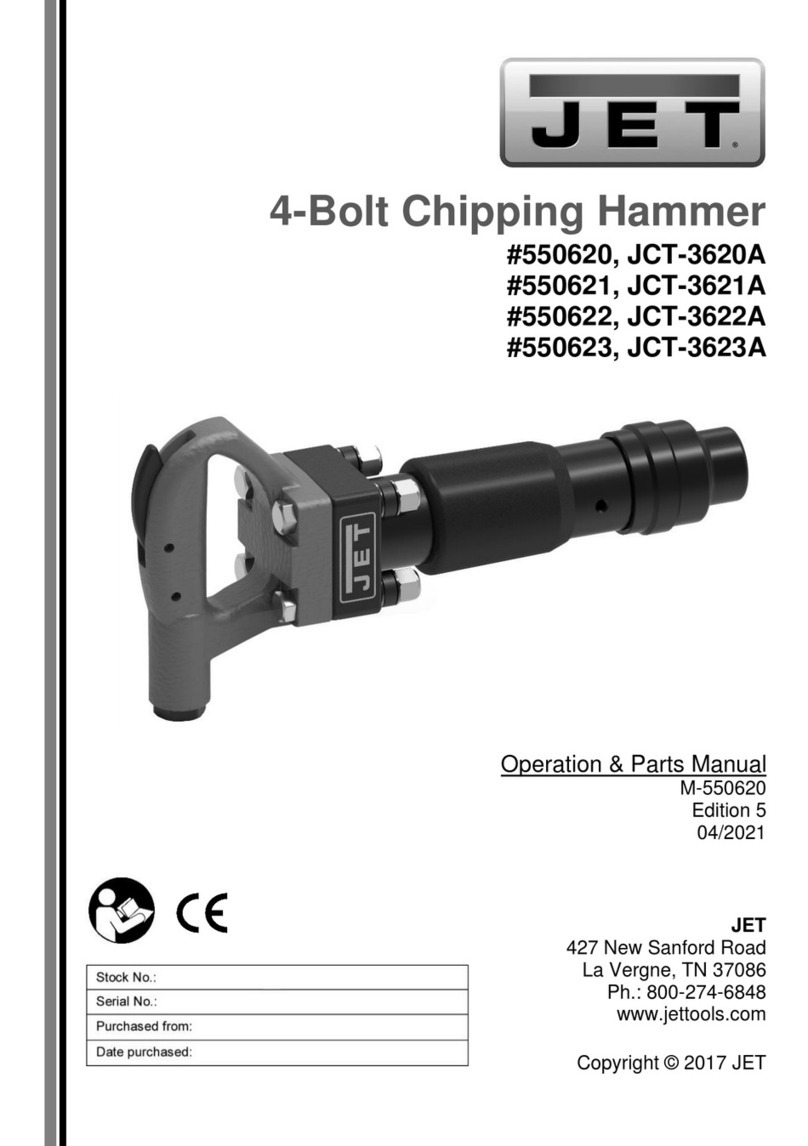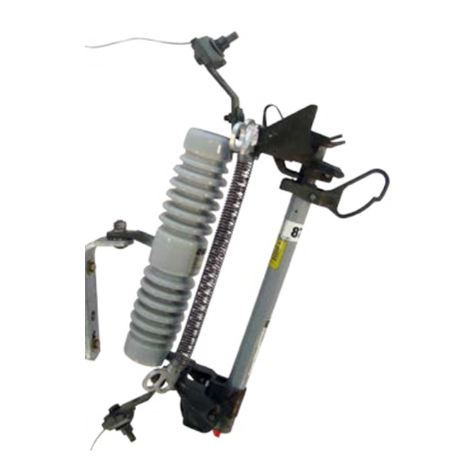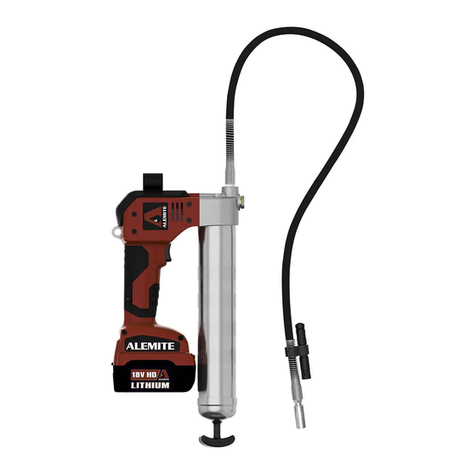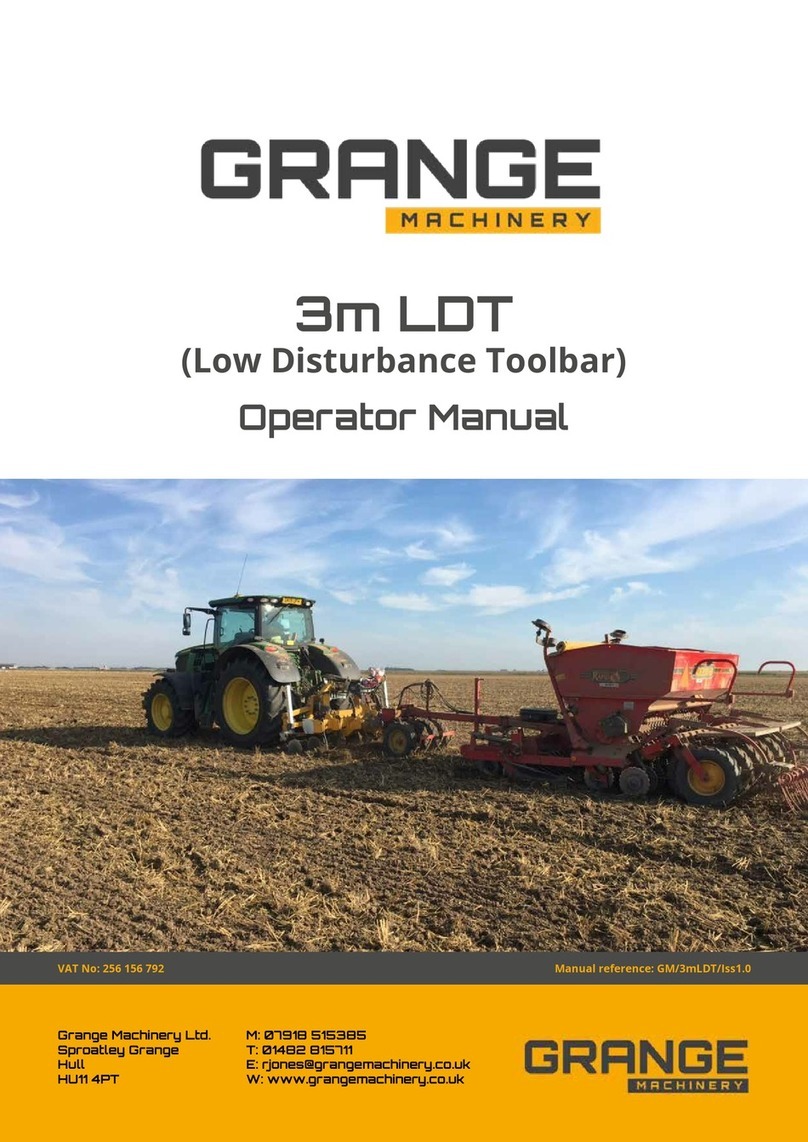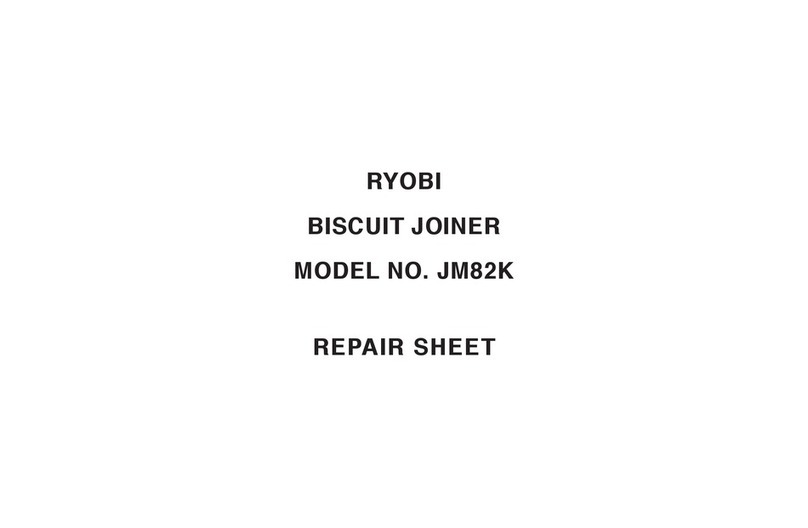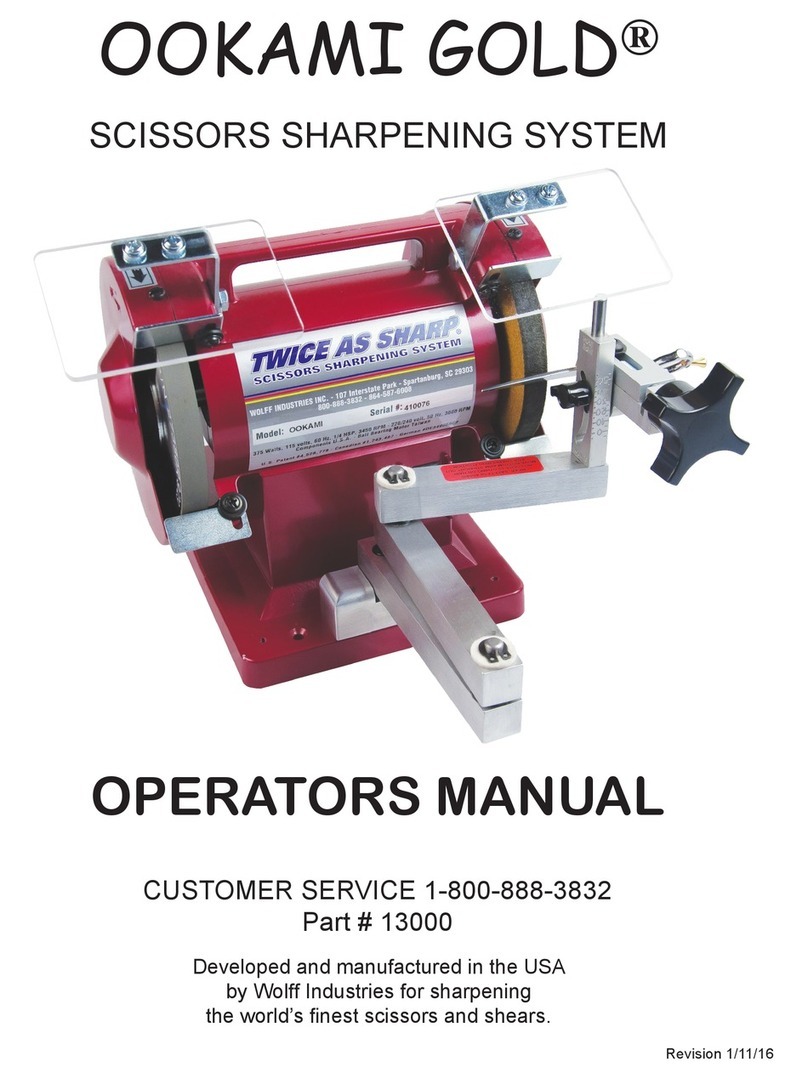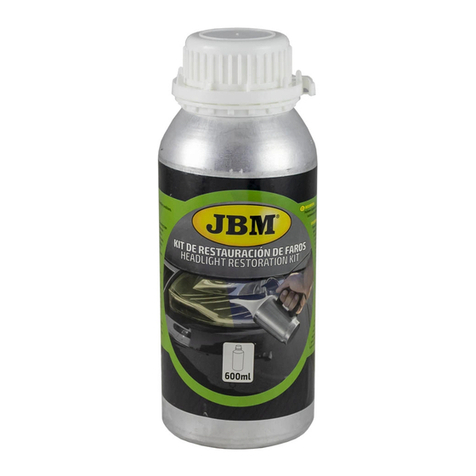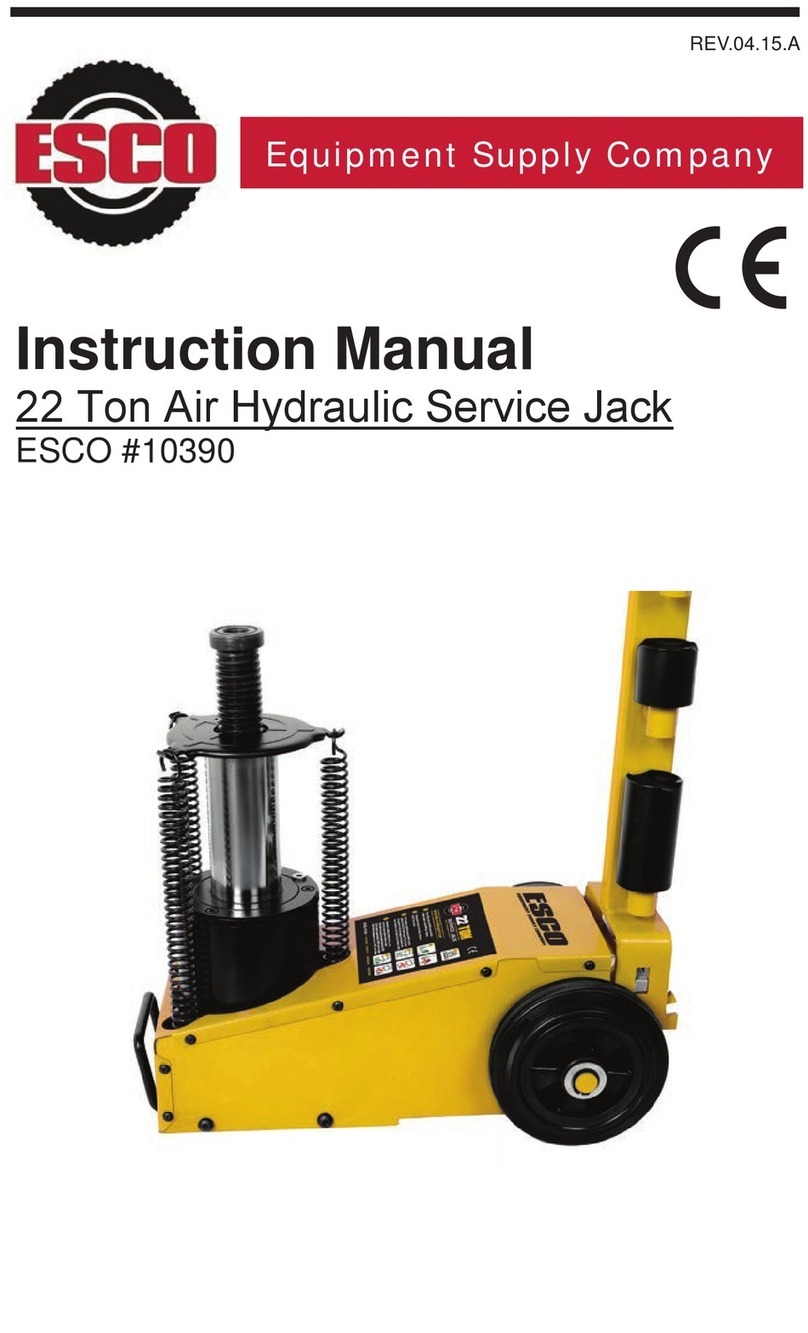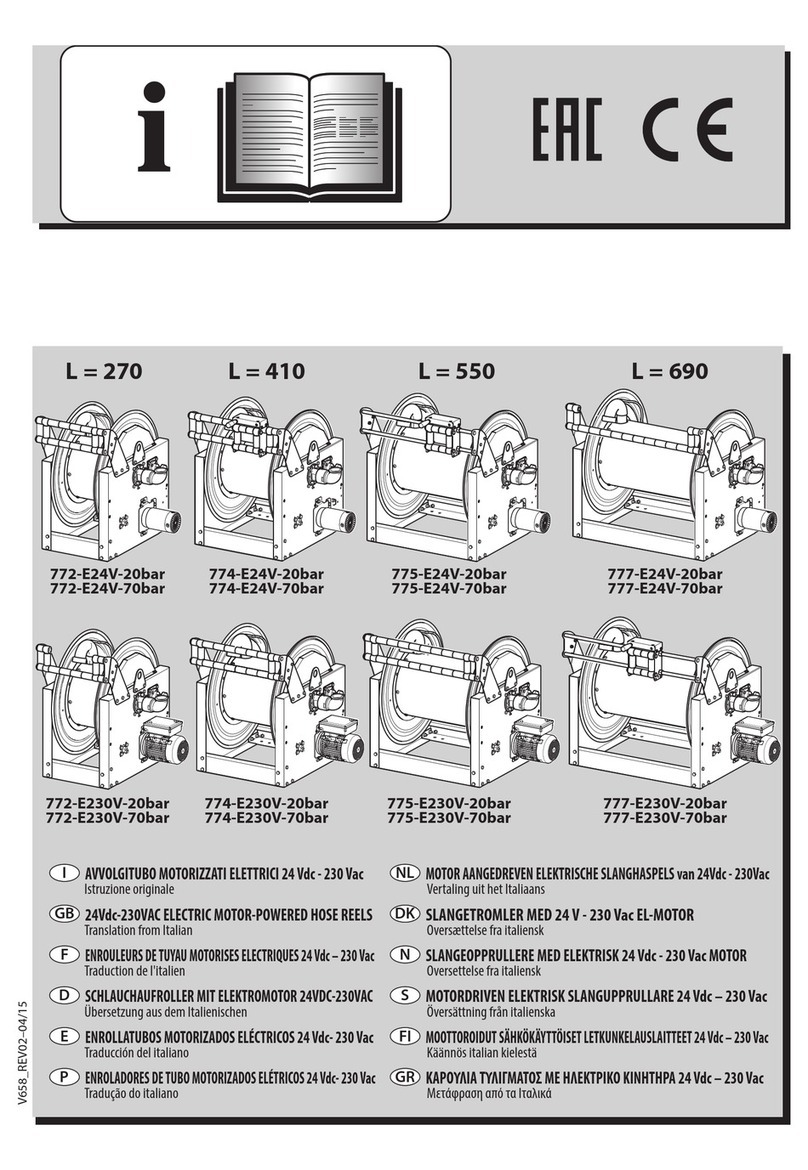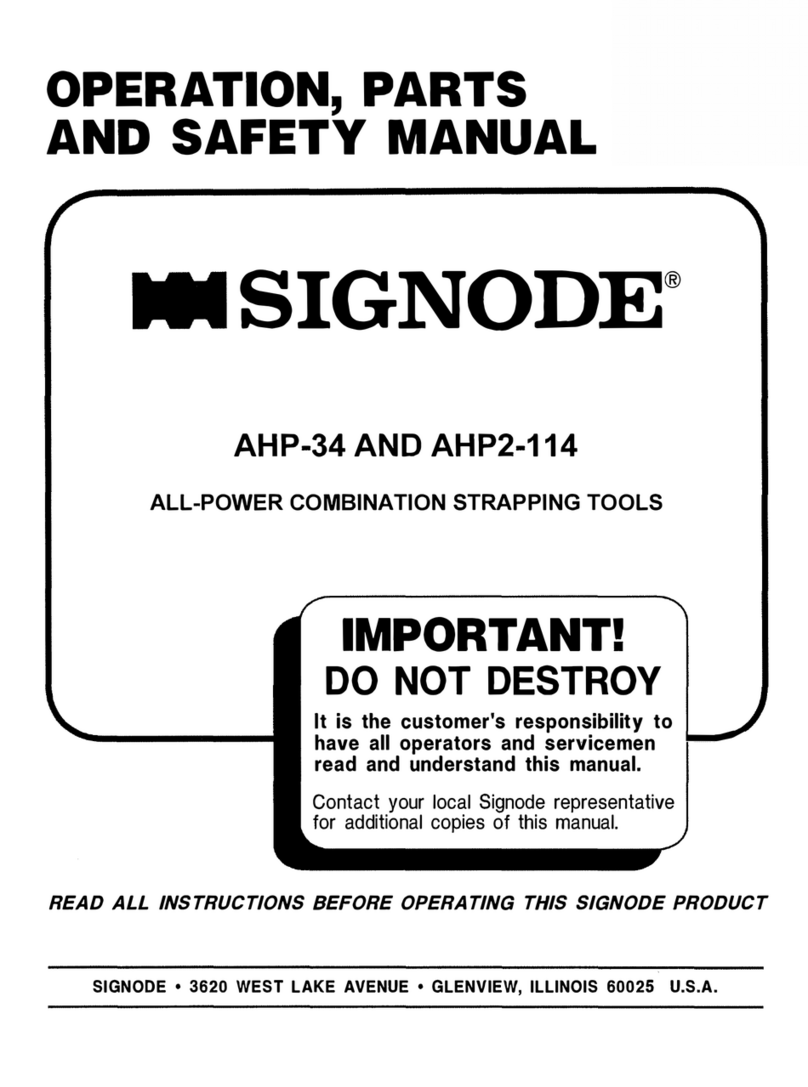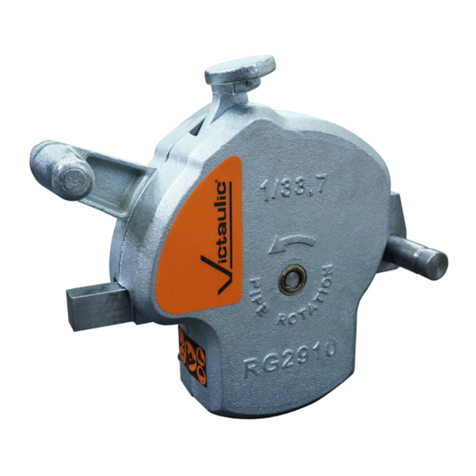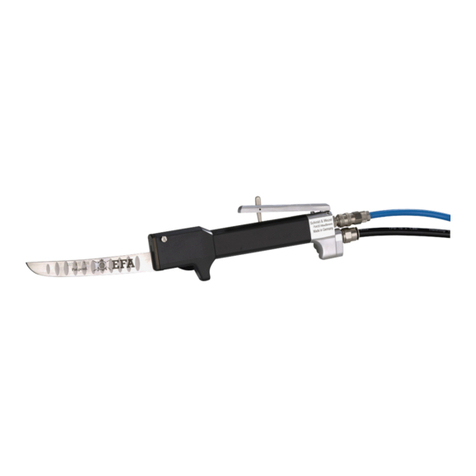AGCO Glencoe SOIL FINISHER SF4600 User manual

Glencoe®
SF4600 SOIL FINISHER®
UM4650 UNIMULCH®
TILLAGE TOOLS
OPERATOR’S
MANUAL
Form number 1PD7611197
November, 1997


Table of Contents
INTRODUCTION
DEALER/CUSTOMER INFORMATION: .....................2
SAFETY
SAFETY PRECAUTIONS ............................3
SAFETY DECALS ................................5
OPERATION
TRACTOR PREPARATION ...........................7
IMPLEMENT PREPARATION ..........................7
FIELD OPERATION ..............................10
FIELD OPERATION OPTIONAL ATTACHMENTS ...............15
TRANSPORT & STORAGE
TRANSPORT ..................................19
STORAGE ...................................20
LUBRICATION
LUBRICATION .................................21
MAINTENANCE & SERVICE
MAINTENANCE.................................22
HYDRAULICS - CHARGING THE HYDRAULIC SYSTEM
HYDRAULICS..................................24
HYDRAULICS
TIGHTENING STRAIGHT THREAD FITTINGS ................27
TORQUE CHART
BOLT TORQUE CHART - COARSE THREAD .................28
SPECIFICATIONS
GLENCOE® SF4600 SOIL FINISHER® ....................29
GLENCOE® UM4650 UNIMULCH® ......................29
i

NOTES
ii

INTRODUCTION
The Glencoe® SF4600 Soil Finisher® is a seedbed preparation tillage tool. It is designed for secondary tillage
in previously tilled soil such as plowed or coulter chiseled ground. This machine features either
G-tine shanks or spring cushion 165 pound point pressure shanks.
The Glencoe® UM4650 UniMulch® is a heavy duty, high residue, single pass, seedbed preparation tool. It is
designed for seedbed preparation in tilled or untilled ground such as standing cornstalks and other high
residue conditions. This machine features auto-reset 550 pound trip shanks.
This manual provides suggested operating techniques to help you obtain efficient and dependable service
from your new machine. This manual also contains general information, specifications, safety information,
maintenance and service requirements for your machine. Read this manual carefully.
Keep this manual handy for future reference. If you have any questions, contact your Glencoe® equipment
dealer. Your dealer is the best qualified to help you. He has qualified service technicians and genuine
Glencoe® replacement parts to keep your machine in top operating condition. This manual should remain
with the machine when sold.
This manual was prepared from the latest product information available at publication time. The Company
reserves the right to make changes at any time without notice.
The Glencoe® UM4650 UniMulch® shown above is equipped with the four optional rear attachments that are
available:
8-Bar Spike Tooth Harrow, Treader, Rolling Reel with 5-Bar Spike Tooth Harrow, 5-Bar Spike Tooth Harrow.
1
GNC0006

DEALER/CUSTOMER INFORMATION
TO THE DEALER:
Warranty Registration
A warranty registration form must be completed for
each serial-numbered unit by the dealer and signed
by both the dealer and the customer before or upon
delivery. Distribute the copies according to
instructions on the form.
Predelivery
Using the Predelivery Inspection and Service
Report, be sure the implement is completely set up,
lubricated and in proper working order upon delivery
to the customer.
Operator’s Manual
The operator’s manual is a very important part of the
equipment purchase. Using the manual, be sure to
instruct the owner and the operator regarding the
following:
•Safety Precautions
•Operation and Adjustments
•Lubrication and Maintenance
Be sure to give this manual to the owner.
Serial No.______________________________
Date Purchased_________________________
TO THE CUSTOMER:
Warranty Registration
Be sure to sign the registration form and keep your
copy.
Know Your Equipment
Before operating the implement, read the operator’s
manual to become completely familiar with the
machine before using it.
Left and Right Hand Sides of Machine
Stand behind the machine and face in the direction
of forward travel to determine left hand (LH) and
right hand (RH) sides of the machine.
Serial Number
The serial number plate is located on the front main
frame member. Record the serial number in the
space below. Your dealer needs the serial number
to give prompt, efficient service when ordering parts.
Safety is Important
•Develop and follow good safety practices and
encourage others working with you to do the
same.
•Always operate farm machinery in a careful,
safe manner.
•Never attempt to adjust, clean or service the
machine while it is in motion.
•Always shut off the tractor engine before
leaving the seat.
Authorized Service
For factory authorized service and parts, see your
dealer. The dealer’s trained service staff uses the
latest service techniques. The trained parts
personnel provide accurate and prompt delivery of
quality parts.
2
GNC0020A

SAFETY PRECAUTIONS
SAFETY SYMBOL
The symbol above calls your attention to instructions
concerning your personal safety. The symbol is
found throughout the manual as well as on the
machine to point out specific hazards and the ways
to avoid them. Always follow the instructions to
minimize the risk of personal injury or death.
Think before you act !
•Avoid injury or fatal accidents. Read these
safety precautions completely and carefully!
Utilize these instructions when operating your
machine.
•The operator should be a responsible adult
familiar with farm machinery and trained in this
machine’s operations. Do not allow persons to
operate this machine until they have read this
manual and have developed a thorough
understanding of the safety precautions and of
how the machine works.
•To prevent injury or death, use a tractor
equipped with a roll-over protection structure
(ROPS) and seat belt. Do not paint over,
remove or deface any safety decals on your
equipment. Observe all safety decals and follow
the instructions on them.
•Remember! Your best insurance is a careful and
responsible operator. If there is any portion of
this manual or of the machine’s operation you
do not understand, contact your local
authorized Glencoe® dealer, or AGCO®
Corporation.
•Always shut off tractor, shift to “Park” position
(or shift to neutral), set brakes and cycle
hydraulic levers before dismounting tractor or
working around the machine.
•Remove tractor start key when tractor and
implement will be unattended.
•Properly tighten all mounting hardware. See
bolt torque chart.
•Periodically inspect all moving parts for wear
and replace with only authorized service parts if
any excessive wear is present. If safety decals
are missing, illegible, or damaged, they should
be replaced.
•Keep safety decals free of dirt and grime.
•Never allow anyone to ride on this equipment.
•Clear the area of bystanders before starting
operation.
•Do not clean, adjust or service when the
machine is in motion.
•Never leave unattended equipment in the
unlocked raised position. Lower the unit to the
ground or use transport locks.
•Do not leave tractor or implement unattended
with tractor engine running.
•All hydraulically or mechanically elevated
components must be blocked to prevent
accidental lowering or must be lowered to the
ground when adjustments or repairs are made.
•Avoid sharp turns using brakes. Drive slowly
over rough ground, side hills and around
curves to avoid tipping.
•Wear personal protective equipment (PPE)
such as, but not limited to, protection for eyes,
lungs, ears, head, hands and feet when
operating, servicing or repairing equipment. Do
not wear loose clothing or jewelry as it may
entangle or catch on moving parts.
•Never use your hands to locate a hydraulic
leak. Use a piece of wood or cardboard.
Hydraulic fluid escaping under pressure can
penetrate the skin causing serious injury.
3
Hydraulic Leak Detection

•Openings in the skin and minor cuts are
susceptible to infection from hydraulic fluid. If
injured by escaping fluid, see a doctor at once.
Without immediate medical treatment, serious
infection can occur.
•Be certain the hydraulic system is fully charged
with oil before use. Air in the hydraulic system
can result in uncontrolled movement of the
wings during raising and lowering operations.
•Stay clear of the folding wings when they are
being raised or lowered.
•Lower the machine to the ground, shut off
hydraulic supply and relieve all hydraulic
pressure before disconnecting hydraulic lines.
•Do not unhitch from tractor while in the raised
position. Unhitching the machine in a raised
position could cause the front of the machine
and the hitch to spring upward possibly injuring
the operator and bystanders. Always store the
machine in the lowered position (shovels
resting on the ground).
•Be sure no one is between the tractor and the
implement while the tractor is being positioned
during the hitching operation.
•The minimum weight of the towing vehicle
should be at least equal in weight of the towed
implement.
•Comply with your state and local laws
governing highway safety, lighting & marking,
and the movement of farm machinery on public
roads.
•Never transport machine unless hydraulic
systems are completely charged with hydraulic
oil and the transport locks are engaged.
•Raised wings can contact electric utility lines
and overhead obstructions. Severe shock,
injury, or death can result. Drive carefully.
Measure overall transport height and width to
assure clearance.
•Always drive at a reasonable speed to maintain
control of the equipment. Do not tow at speeds
in excess of 20 mph.
•Utilize transport chains. The transport chain
should be adjusted so that the tongue of the
towed machine will not touch the ground in
case of loss or breakage of the hitch pin.
•Use approved extremity lighting and warning
devices to warn operators of other vehicles on
the highway during transport.
•Make sure the light harness is properly
connected and all the lights are visible and
working.
•Turn on flashing warning lights before driving
on public roads, except when prohibited by law.
•Make sure reflectors are visible when
transporting.
•Use a SMV (Slow Moving Vehicle) emblem at all
times.
•Drive carefully. Plan your route to avoid heavy
traffic and restrictions. Measure overall
transport height and width to assure clearance.
•Be a safe and courteous operator.
4

SAFETY DECALS
DECALS
The following decals are installed to alert operators to hazards in specific machine areas. The decals are for
personal safety... READ AND UNDERSTAND THE DECALS!
•Keep decals clean by wiping off regularly. Use a cleaning solution if necessary.
•Replace missing, damaged or painted over decals.
Decal Identification and Location
ITEM NUMBER DESCRIPTION
1 364866 Decal, Warning
2 364864 Decal, Warning
3 364865 Decal, Warning
4 364863 Decal, Danger
5 360942 Decal, Warning
6 364862 Decal, Danger
7 H1284365C2 Reflector, Amber
8 H1284374C1 Reflector, Red
5

SAFETY DECALS
6

OPERATION
Warning! Do not unhitch from tractor while in the raised position. Unhitching the machine in a raised
position could cause the front of the machine and the hitch to spring upward possibly
injuring the operator and bystanders. Always store the machine in the lowered position
(shovels resting on the ground).
TRACTOR PREPARATION
Prior to attaching the implement the tractor should
be prepared as follows:
•Tractor tires should be inflated and ballast
added according to the tractor operator’s
manual.
•The tractor drawbar should be locked in the
center position for road transport. For field
operation the drawbar must be free to swing.
•Check the tractor hydraulic reservoir and add
oil as required. Additional oil may be required
after charging the hydraulic system. (Refer to
the “Charging the Hydraulic System” section of
this manual.)
IMPLEMENT PREPARATION
Before taking your implement to the field the
following procedures should be done.
•Check all hardware for proper tightness. When
the machine is new the hardware should be
checked every few hours of operation.
•Replace any ground tools that are severely
worn or damaged.
•Check tires for proper inflation. Check the
wheel lug bolts.
•Lubricate the machine.
•Check hoses, fittings and cylinders for any
fraying of hoses or leakage. Replace as
required.
•Never use your hands to locate a hydraulic
leak. Use a piece of wood or cardboard.
Hydraulic fluid escaping under pressure can
penetrate the skin causing serious injury.
•Openings in the skin and minor cuts are
susceptible to infection from hydraulic fluid. If
injured by escaping fluid, see a doctor at once.
Without immediate medical treatment, serious
infection can occur.
7
Hydraulic Leak Detection

OPERATION
ATTACHING THE IMPLEMENT
Warning! Be sure no one is between the tractor
and the implement while the tractor
is being positioned during the
hitching operation.
•Carefully back your tractor into place and attach
the clevis to the drawbar. Use the correct size
drawpin for the clevis. For field operation the
clevis should be free to rotate. Move the clevis
locking pins (A) to the storage tubes (B) so that
the clevis can rotate.
•Clean the hydraulic couplings and make sure
they match the tractor hydraulic outlets. Use
only one style of couplings to prevent system
lockup.
•The hydraulic hoses should be connected so
that the implement will raise when the hydraulic
lever is moved rearward and lower when the
lever is moved forward.
8
A
GNC0008
B
GNC0009

OPERATION
GENERAL OPERATION INFORMATION
•Before raising or lowering the machine or
operating the wing fold mechanism be certain
the hydraulic system is charged with hydraulic
oil. (Refer to the “Charging the Hydraulic
System” section of this manual.
•Check the hydraulic oil level of the tractor. Add
oil as required.
•When operating the implement in the field,
always allow the tractor drawbar to swing free.
•Recommended operating speed is5-8mph.
•Horsepower requirements will vary depending
on depth of operation, soil type and condition.
•Speed should be reduced at the ends of the
field and when turning. Do not make high
speed turns at any time, either in the field or in
transport.
•To prevent shank damage, raise the machine
completely out of the ground when backing up
or turning during operation.
•Raising the machine completely out of the
ground (cylinders completely extended) helps
keep the hydraulic system in phase. This also
applies to the hydraulic disc gangs. Fully
extend disc gang cylinders at regular intervals
to keep them in phase. Refer to the “Charging
the Hydraulic System” section of this manual.
9

OPERATION
FIELD OPERATION
Warning! Never allow anyone to ride on this
equipment. Clear the area of
bystanders before starting operation.
Warning! Avoid sharp turns using brakes. Drive
slowly over rough ground, side hills
and around curves to avoid tipping.
Preparation for field use.
Move the tractor hydraulic levers which control both
the axle cylinders and the winglift cylinders rearward
as if to raise both the unit and the wings to help
make sure there is no air in the hydraulic lines.
Remove the two main wing lock pins (A) and store in
position (D). Move the hydraulic lever forward and
slowly unfold the wings. Make sure the wing
cylinders are fully extended to allow the wings to
follow the contour of the ground.
IMPORTANT: On tip down models:
1. Remove main wing lock pins (A) and store in
position (D).
2. When starting the unfolding process, make sure
the tip down wing locks (B) remain engaged so
that the main wings unfold first.
3. When the main wings are on the ground, stop
applying the hydraulic power. At this point,
visually confirm that the tip down wing locks are
disengaged. Machine damage will occur if the
tip down wing locks do not disengage.
4. Then slowly continue the unfolding procedure
until the unit is completely unfolded.
Initial Frame Leveling
Move the hydraulic lever that controls the axles
forward to lower the implement to the ground. At this
point, adjust the hitch turnbuckle (C) to level the
frame so it is parallel with the ground. This will help
insure that all the shanks are cutting at the same
depth.
10
D
D
GNC0010
B
GNC0011
C
GNC0012A
A

OPERATION
Initial Main Frame and Wing Frame Leveling
Main frame turnbuckle adjustments should be made
simultaneously so that the main frame is level across
the width of the machine. Then level the wings to the
main frame.
Remove the wrench provided from the storage
position (B). Loosen the locking nut on the lower end
of the turnbuckle (A). Close the turnbuckle to raise
the frame and open the turnbuckle to lower the
frame. Adjust all turnbuckles as necessary.
To prevent the wrench from slipping make sure the
wrench opening is on the opposite side of the
turnbuckle than where the pressure is being applied
to turn it. Use the locking nut to secure the
turnbuckle after adjusting the wing raising shafts.
Return wrench to its storage position (B).
Depth of Tillage
•Disc depth should not exceed 3" - 4".
•Shank depth should not exceed 5" - 6".
•Rolling reel depth should not exceed 3" - 4". Do
not operate deeper than the shanks.
Adjustments
Important: The wheel cylinders should be
completely closed when the machine is at the
desired operating depth.
Check depth of tillage and frame level by pulling the
unit in the ground a few feet and then stop. Leave
the unit in the ground. Take measurements. Adjust
as necessary.
Main Frame and Wing Frame Depth
Main frame operating depth is controlled by
shortening or lengthening the turnbuckles (A).
Shorten the turnbuckles to decrease operating
depth. Lengthen the turnbuckles to increase
operating depth. Main frame turnbuckle adjustments
should be made simultaneously to maintain a
uniform operating depth across the width of the
machine. 1" of turnbuckle adjustment (5 revolutions)
is equal to 2" of tillage depth adjustment.
After setting the depth of the main frame, follow the
same procedure to adjust the wing turnbuckles so
the wings are level with the main frame and/or a
uniform depth is achieved.
11
A
GNC0013
GNC0014A
B

OPERATION
Frame Leveling
After achieving the proper depth, Recheck the level
of the machine (front to rear). Adjust the hitch
turnbuckle (C), if necessary. Once set, the machine
will remain level as long as the drawbar height
remains the same. Recheck shank depth.
Maintaining Uniform Depth
The raising shafts are synchronized for raising and
lowering the unit when the hydraulic system is
charged with oil. Should the raising shaft operation
become irregular causing uneven depth of tillage,
raise the unit and hold the tractor hydraulic lever
until all the raising shaft cylinders are fully extended.
Continue holding the hydraulic lever open with the
cylinders fully extended in order to purge air from the
hydraulic system. This will return the raising shaft
cylinders to their proper synchronization. Air can
enter the system by a leaking fitting, mismatched
coupler or low oil in the tractor. Internal cylinder
leaks can also cause erratic operation.
In order to keep the raising shaft and the disc
gang hydraulic systems synchronized, the
cylinders should be fully extended as frequently
as possible during operation.
It is important to keep all bolts tight. Check bolts
frequently during the first few hours of operation.
After the break-in period, check them periodically.
12
C
GNC0012A

OPERATION
Shanks
Three edge-formed shank options are available:
G-Tine: Available on all size models of SF4600.
Spring cushion 165# point pressure shank:
Available on all size models of SF4600.
Auto-reset 550# trip shank: Available on all size
models of UM4650. (18’ thru 341/2’)
Ground Tools
11" sweeps with parallel clipped-wings (47 stem
angle) are standard.
13
GNC0005
GNC0021
GNC0007

OPERATION
Spring Cushioned Disc Gangs
The disc gangs should not operate deeper than 3" to
4" and no deeper than necessary for desired residue
cutting. In high residue conditions the discs should
only cut the residue.
In coulter chiseled ground the discs should be
adjusted to run just above the bottom of the furrows
between the ridges.
Cutting depth is adjusted hydraulically. Excessive
disc gang down pressure could affect frame level
and adversely affect machine performance.
If the disc gangs are not required for a tillage
operation, they may be raised out of the working
position.
The blades are spaced at 10" with an 8 cutting
angle. Feathering blades are mounted at the end of
each gang.
14
GNC0015
GNC0004

OPERATION
FIELD OPERATION
OPTIONAL ATTACHMENTS
Treader Gangs
The teeth on the treader gangs are curved. The
treader will function properly only if the treader
gangs are rotating in the correct direction in
relationship to the direction of pull.
15

OPERATION
Treader Gangs
The treader gangs can be set to run at various angles ( 0, 5, 10, 15, 20 degrees). As the angle increases so
does the aggressiveness of the treader. In wet conditions, reduce the angle to reduce plugging.
•The straight position is for a packing action.
•The 15 degree setting is recommended for most operations.
•The 20 degree setting is for a very aggressive action.
In the field, there should be no weight down on the adjusting rod. This spring is for minimizing road shock
only. The treader should be allowed to float in field use. The turnbuckle is used to adjust the gang height.
The tandem gangs should be level front to rear. The T-handle is used to level the gangs.
If the treader is not required for a tillage operation, it may be raised out of the working position.
16
This manual suits for next models
1
Table of contents
